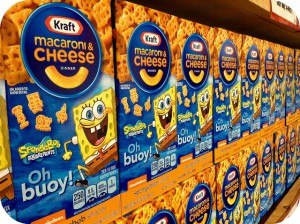 When a company rebrands a popular product, they usually alert the public to the upcoming changes through a widespread marketing campaign. For iconic food and drink brands, however, the process isn’t as straightforward. After all, every marketer remembers what happened when Coca-Cola launched its New Coke brand in the 1990s. Consumers reacted viciously to the soft drink’s revamped recipe, creating a rift with the public that took Coca-Cola years to repair.
When a company rebrands a popular product, they usually alert the public to the upcoming changes through a widespread marketing campaign. For iconic food and drink brands, however, the process isn’t as straightforward. After all, every marketer remembers what happened when Coca-Cola launched its New Coke brand in the 1990s. Consumers reacted viciously to the soft drink’s revamped recipe, creating a rift with the public that took Coca-Cola years to repair.
Executives at Kraft took horror stories like these to heart when they decided to overhaul the company’s famous macaroni and cheese. For three years Kraft researched and developed a new formula that exchanged artificial preservatives and synthetic dyes for natural ingredients. While these are precisely the qualities that many consumers now demand in their food, the company worried that people would revolt against any alterations to such a famous product. These fears became somewhat justified in April 2015 when Kraft announced how the contents of their little blue boxes would change. Many people went to social media to vent their concerns, with some even claiming that they could already taste the difference.
This response alarmed Kraft, which was still months away from actually producing the new recipe. As a result, the company’s marketing team decided to keep quiet once the retooled mac and cheese began landing on store shelves in December 2015. Along with steering clear of any advertising, Kraft updated the ingredients list on the blue box but didn’t change the packaging in any other way. The mac and cheese looked the same out of the box, too, retaining its signature orange color as well as its taste. Consumers apparently didn’t notice any difference: Kraft sold more than 50 million boxes of the new mac and cheese without making a peep. After a few months on the market, Kraft finally broke their silence in an ad campaign that featured the tagline, “We’d invite you to try it, but you already have.” Thanks to this stealthy strategy, Kraft was able to seamlessly improve one of its signature foods without causing any consumer uproar.
Questions:
- Why do consumers become strongly attached to certain food and beverage brands?
- Would New Coke have been successful if Coca-Cola employed a similar strategy as Kraft did for its mac and cheese?
Source: Martha C. White, “Kraft Reveals Revamped Mac and Cheese, 50 Million Boxes Later,” The New York Times, March 20, 2016. Photo by Mike Mozart.
